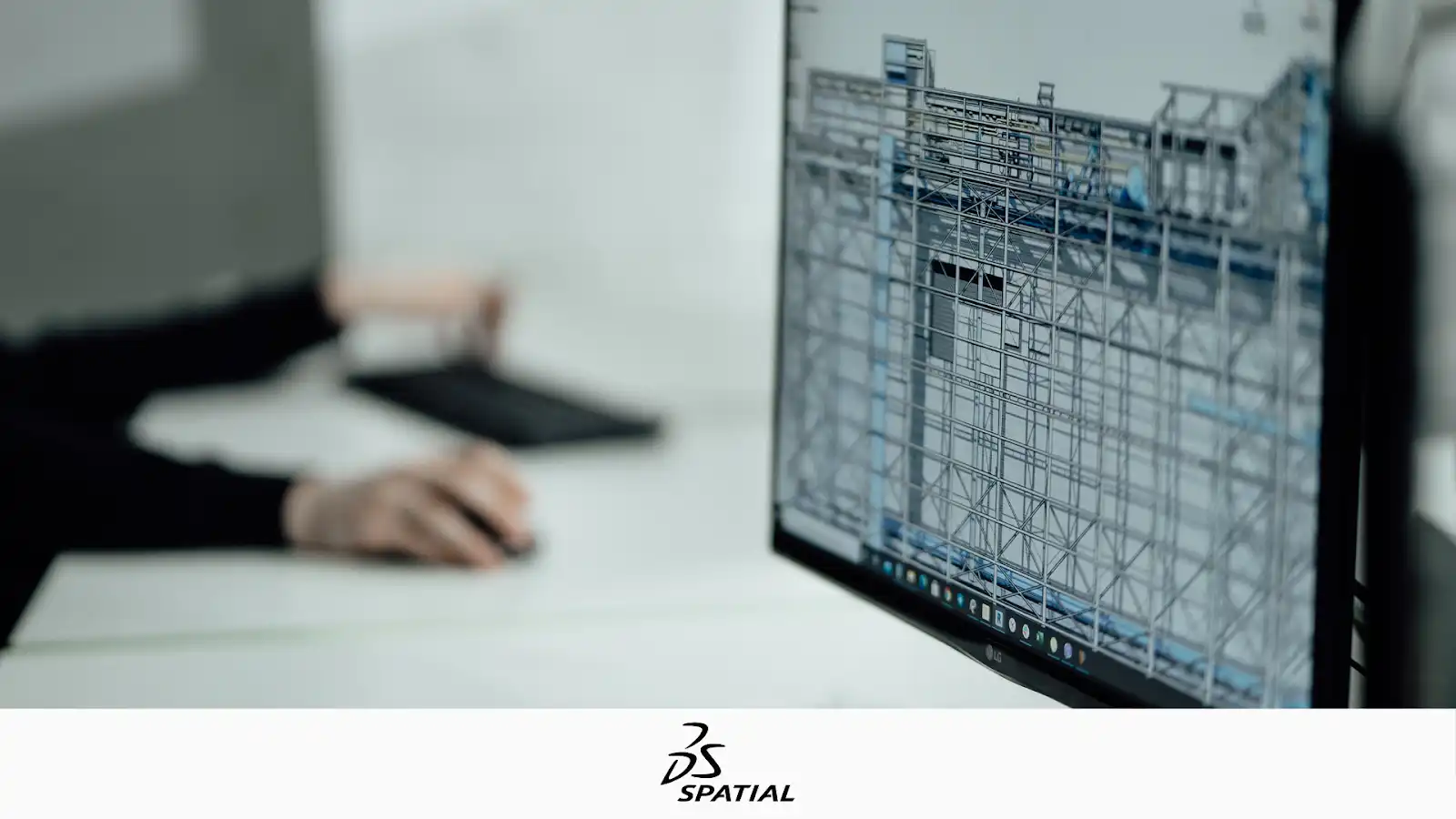What is digital manufacturing?
Here’s a simple digital manufacturing definition: the process of using computer systems to support and improve manufacturing operations.
Digital manufacturing tools (often cloud-based) can connect and simplify processes across the production cycle to create a ‘digital thread’ that integrates manufacturing operations to streamline and enhance design, production, servicing, and more.
Digital manufacturing technologies are used to simulate and model processes so that they can be optimized, helping businesses to reduce operating costs, speed up production, and improve cohesion between different stages of the manufacturing process by more seamlessly pairing them.
Spatial’s 3D InterOp allows Biesse to support a wide range of import formats for their CNC routers
Get Case Study
Digital tools allow manufacturers to centralize and manage the entire manufacturing process in one software platform, opening up possibilities to collect and analyze data across the digital production lifecycle.
This data allows manufacturers to determine where things are being slowed down, which parts of the production line need maintenance, and how much demand there is for specific products, all in real-time, so the business can act and adapt on the fly.
What Are the Types of Digital Manufacturing?
There are three areas where digital manufacturing can be applied: product lifecycle, smart factory, and value chain management.
Product Life Cycle
In the product life cycle, which starts with engineering design and moves through sourcing, production, and servicing, cloud-based digital tools can make it easier to revise design specifications, anticipate raw materials demand, and provide better servicing to customers
Smart Factories
Smart factories use machines, sensors, and tools to gather real-time data that can be turned into insights that increase the efficiency of your processes. Insights can then be used to change processes and controls to boost productivity and reduce costs.
Value Chain Management
The area of value chain management is concerned with minimizing the number of resources required to run a manufacturing operation without cutting any corners. For example, digital tools allow companies to see in real-time where they can scale back inventory to free up cash flow while ensuring they will never get caught off guard by a demand spike or shortage.
Watch How Spatial Can Speed Up Manufacturing Workflows
More Benefits of Digital Manufacturing
You can now see the benefits of digitizing manufacturing and what digital production can offer. On top of what we’ve already mentioned, digital tools can enable a level of precision and automation that virtually eliminates errors in the production process. It also saves on manual work by automated paper-based processes that manufacturers have likely relied on for many years.
Furthermore, digital manufacturing comes with a level of agility that allows design changes to be made in real-time, without having to shut off the production line and lose revenue. Along with the advantage of being able to create virtual manufacturing environments that allow designers to test a simulated process before spending time and money on physical implementation.
By allowing manufacturers to build in a preventative maintenance program that takes advantage of sensors and advanced data collection, maintenance costs can be significantly reduced because all the manual processes that went into inspecting machines are digitized.

Digital manufacturing is not only about optimizing processes. It also brings major advantages to the design phase, particularly in introducing 3D modeling software to assist in engineering, machinery design, floor layouts, and production flows.
The potential to create complex designs and highly optimized processes inexpensively through a screen before moving them into production is allowing manufacturers to be much more experimental, creative, and broad in focus than they could dare to be in the past.
Where Are Digital Manufacturing Systems Being Applied?
All of these benefits are being applied across a wide range of industries and for the creation of pretty much any product that requires a manufacturing process to bring it into the world. Some of the most well-known and proven use cases for digital manufacturing include:
- Using software linked to sensors that reports on product quality in real-time, helping businesses to keep an eye on the defect rate so they can tune the process as needed
- Adding smart technology to conveyance to automate the flow of materials in the most efficient way possible, allowing for accelerated production and time to market while staying free of errors and bottlenecks
- Tracking assets in real-time as they move along the supply chain and adjusting production and inventory on the fly as customer needs evolve and fluctuate
Learn More
Assessing Digital Manufacturing Adoption
Even with all the benefits and potential use cases, digital manufacturing has not enjoyed the level of adoption that one might expect. Deloitte research found that only 5% of US manufacturers say they have at least one “smart factory”.
The reasons for this can often be chalked up to businesses worrying about production flow disruptions, the cost and complexity of digitization, and fears around security. Early adopters will show laggards the way, and as traditional manufacturers start to see their productivity and performance fall behind their peers, they’ll see they have no choice but to digitize.
Unlocking the Full Potential of Digital Manufacturing
Digital manufacturing presents exciting opportunities for product developers and manufacturers alike. Unlike iterative developments which have helped streamline workflows and reduce errors, it has the potential to transform how we design, evaluate, produce, and improve products.
Digital Manufacturing will upend many industries and bring more efficiencies to workflows and production lines. There are already a number of powerful computer-aided manufacturing technologies allowing manufacturers to connect the engineer’s desk to the shop floor. It can only be expected that more capable and robust technologies will continue to be released to change and elevate digital manufacturing.
Among the most advanced digital tools available to manufacturers today are Spatial’s SDKs, which provide all of the data libraries needed for cutting-edge 3D modeling functionality. Our SDKs power innovative computer-aided design and computer-aided manufacturing applications used in manufacturing.
See how Spatial’s automated machinery and robotics software are allowing manufacturers to increase productivity.




.jpg?width=450&name=Application%20Lifecycle%20Management%20(1).jpg)














